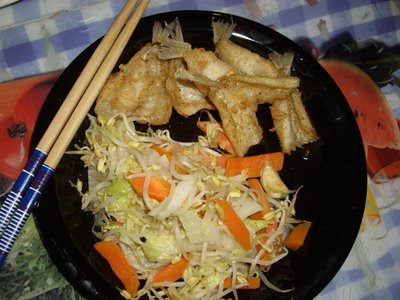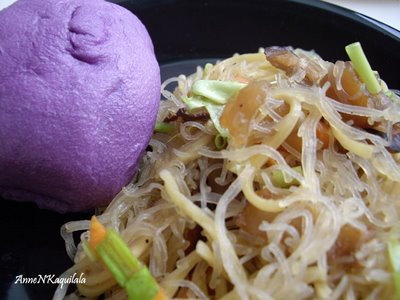Here's a tribute to working mothers, people who just have so much on their hands, or those with kitchen phobia: A dish that starts with a single, simple step, but which finishes into 3 dishes. Make this ahead and you have something quick for baon (so you can snatch longer Zzzsss), something to serve when you have unannounced company, or for times when you just don't feel like cooking. If you're a newbie cook, today you'd be learning 3 recipes in one!
Note that the each recipe shares an ingredient or two with one of the recipes, to save on prep time. I also used only one pan for the three recipes so there's less to wash up afterwards. :)
=========
The Beginning actually leads to infinite possible dishes but for this post it finishes into
Mock Chicken Pastel,
Chicken Afritada and
Soy Chicken with Mushrooms:
 One Beginning, Three EndingsWhat's In It?The Beginning: Chicken Saute
One Beginning, Three EndingsWhat's In It?The Beginning: Chicken Saute1 1/2 kgs chicken breast, chopped into small portions
1 large onion or 2 medium ones, peeled and sliced
5 cloves garlic, minced
5 T fish sauce
2 t ground pepper
1/4 c cooking oil
Mock Chicken Pastel1/3 of the Chicken Saute
1 can vienna sausage, sliced diagonally or into rings
1 small red bell pepper, cubed
1 small potato, peeled, cubed and fried*
1 small carrot, peeled, cubed and fried*
1/4 c green peas
1/4 c button mushrooms (pieces and stems)
1/2 c evaporated milk
1 c hot water
Chicken Afritada1/3 of the Chicken Saute
1 small sachet tomato sauce (or 5 T tomato paste + 1 c hot water)
3 bay (laurel) leaves
1 small red bell pepper, cubed
1 small potato, peeled, cubed and fried*
1 small carrot, peeled, cubed and fried*
Soy Chicken with Mushrooms1/3 of the Chicken Saute
1/4 c soy sauce
1 c hot water
1 small can buttom mushrooms (pieces and stems)
3-4 stalks green onion, minced, for garnish
Kitchen Conjugations:CHICKEN SAUTE. In a wok or deep pan heat oil over high heat. Fry the potatoes and carrots until half cooked. Remove and transfer into a dish. Set aside.
In the same oil, saute onions until soft and translucent, then add garlic, stir frying for about a minute. Add in chicken, stir fry for 30 seconds, then add fish sauce and ground pepper. Stir. Cover and let simmer for 2 minutes or until chicken loses its pinkish color.
Remove about 2/3 of the chicken from the pan and transfer onto a dish. Set aside.
You are now ready to make Mock Chicken Pastel.
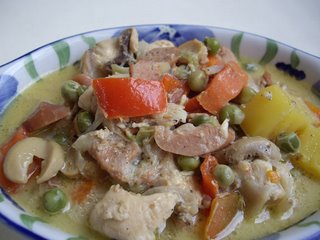 MOCK CHICKEN PASTEL
MOCK CHICKEN PASTELLet the chicken saute simmer for three more minutes, then add in hot water, milk and half of the fried potatoes and carrots. Let simmer until the vegetables are fork-tender, stirring from time to time, about 3 minutes. Add in sliced sausages and green peas and mushrooms and let simmer for another minute.
Transfer the chicken pastel to a serving/heat proof dish. Set aside.
Bring the pan back to stove and you're now ready to cook Chicken Afritada.
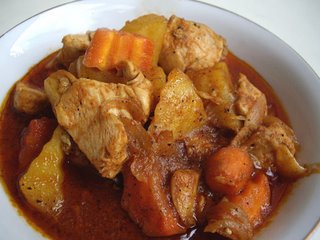 CHICKEN AFRITADA
CHICKEN AFRITADAPour in the chicken saute and let simmer for two minutes before adding tomato sauce/tomato paste and water. Throw in bay leaves, bell pepper and the fried potatoes and carrots, then let simmer for 3 minutes or until the vegetables are fork-tender. Adjust seasonings (salt and pepper) to taste. Add a little brown sugar (about 2 tablespoons) if you want the sauce to be on the sweet side. Let simmer for another minute then transfer the afritada onto a serving/heatproof plate and set aside.
Brick the pan back to the stove and work with the next dish.
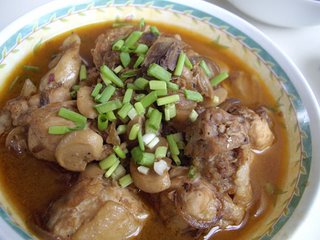 SOY CHICKEN WITH MUSHROOMS
SOY CHICKEN WITH MUSHROOMSAdd in the remaining chicken saute. Pour in the soy sauce and hot water, let boil then simmer for 3 minutes. Stir in mushrooms and cook for another minute. Check seasonings and adjust if needed. Transfer onto a serving plate and garnish with spring onions.
Notes: (Sorry, I can't resist!)
1) Substitute young corn for the mushroom in Soy Chicken and you've got a new dish.
2) For the chicken afritada, add in one or more of the ff: fried saba, baguio beans, cabbage.. and voila! It's Chicken Pochero!
3) Omit the sausage from the Mock Pastel, use coconut milk instead of evap and stir in 4 teaspoons curry powder and you have Chicken Curry!
4) Saute some ginger strips in a little hot oil before you add the chicken saute, then stir in some brown sugar and some rice wine (if available), sprinkle with toasted sesame seeds and sliced leeks and what have you got? Chicken Teriyaki!
5) Of course, you can always use beef or pork for chicken.
Goodluck to your kitchen adventures.... tell me about it. :)

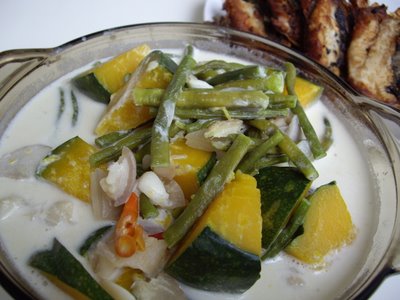




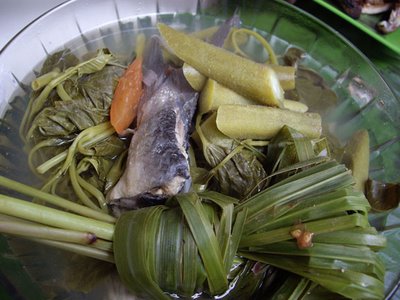


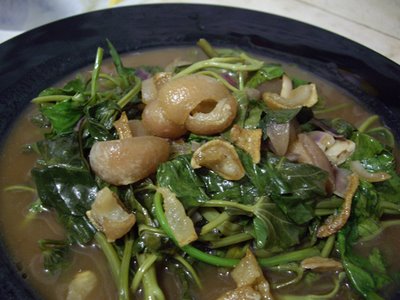









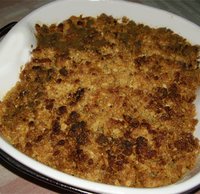
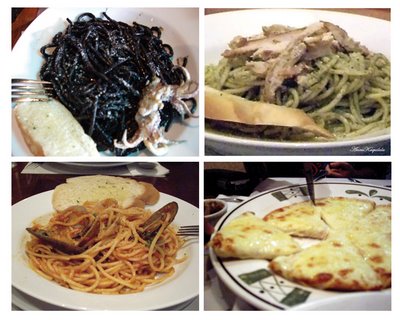



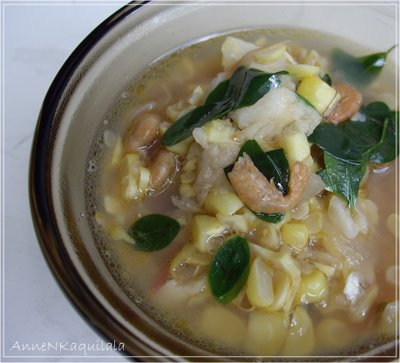


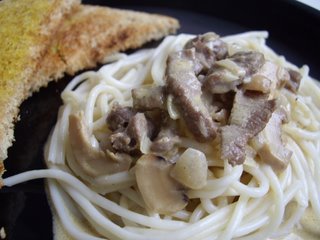
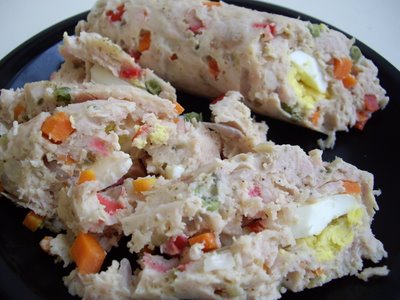




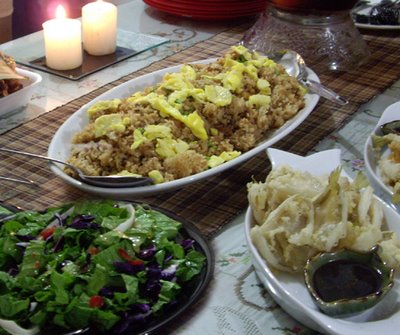



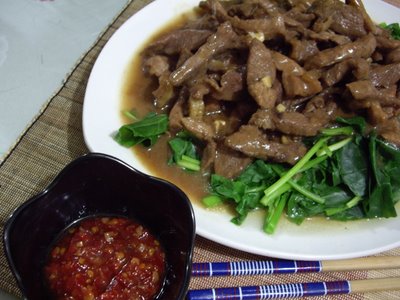
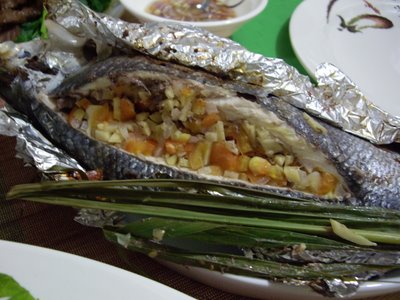




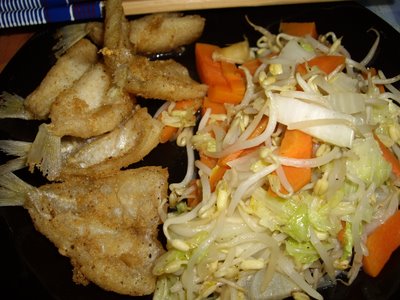 We found the boneless, headless asuhos at the frozen section of SaveMore supermarket in Alabang, at a reasonable P134 per kilo (considering it's been cleaned and deboned).
We found the boneless, headless asuhos at the frozen section of SaveMore supermarket in Alabang, at a reasonable P134 per kilo (considering it's been cleaned and deboned). 